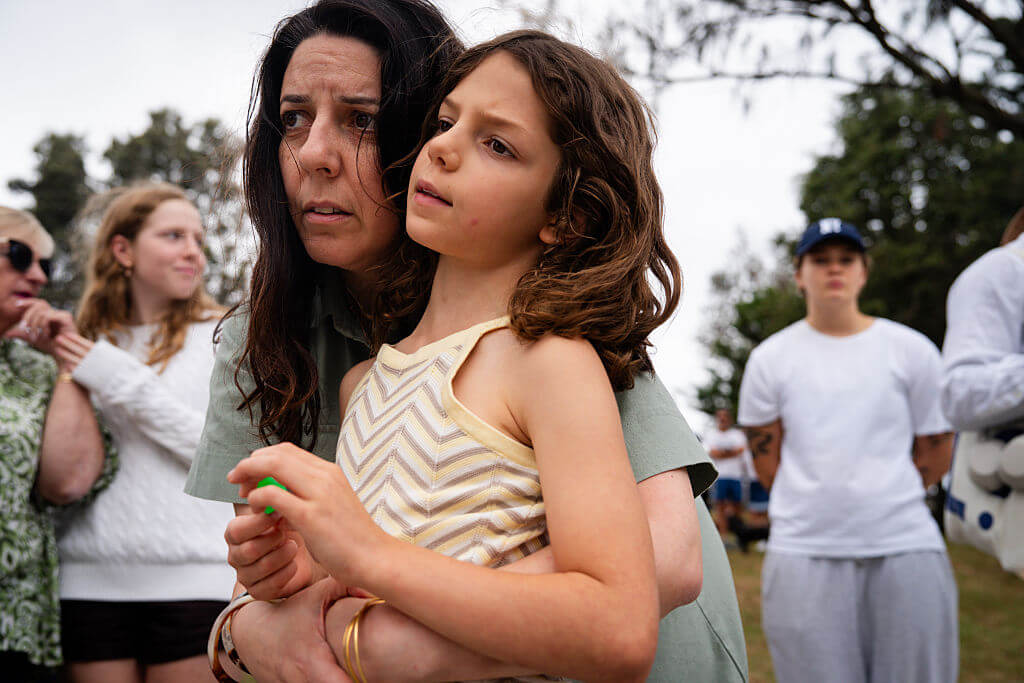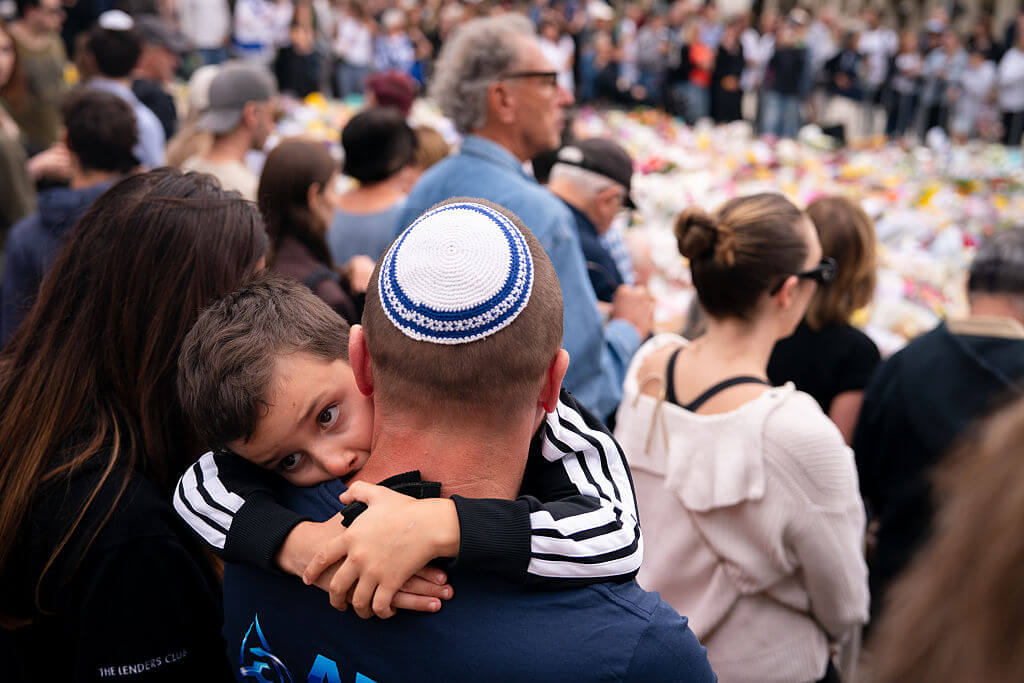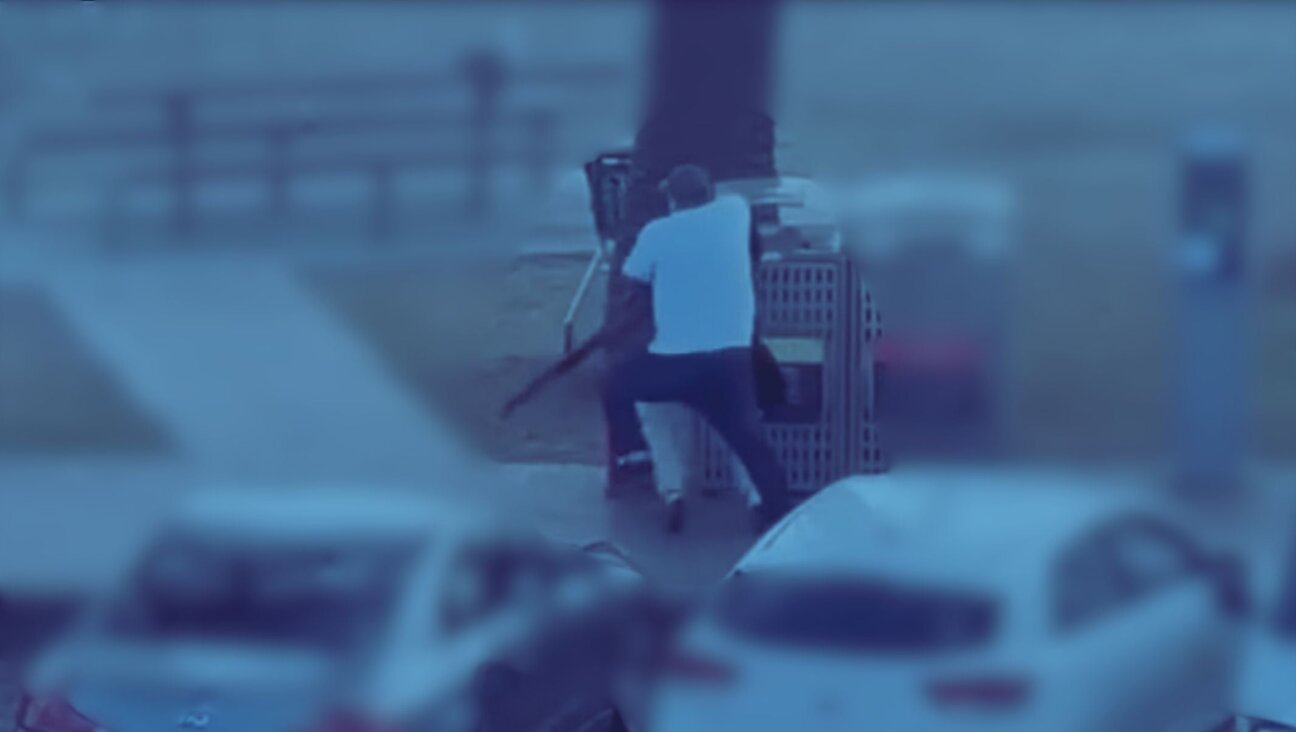Young Players Step Up to the Plate at Yiddish Week
How do you say “home run” in Yiddish? Just ask the dozens of generation X- and Y-ers who were on the field for a hilke-pilke (softball) game during the annual Yidish-Vokh (Yiddish Week), from August 20 to August 26.
Max Kellerman, 30, the boxing analyst and host of ESPN’s “Around the Horn,” took several days off from his busy schedule, as he has every summer for the past seven years, to join the Yiddish-speaking kids in a game of softball. Kellerman showed one teenager how to perfect her swing, saying, “Darfst klapn azoy,” Yiddish for “You have to hit it like this.” She suppressed a giggle, flattered to be singled out by a celebrity, perhaps wondering if now she’d be able to hit a kaylekh-klap (home run).
Although the Yidish-Vokh was born in the mid-1970s as a summer program for Columbia University students — in collaboration with the YIVO Institute for Jewish Research — interest has spread beyond the campus walls to include Yiddish fans of all ages. This year 170 people participated. As in years past, the Yidish-Vokh was held at Camp Emanuel in Copake, N.Y., and was organized by Binyumen “Ben” Schaechter, director of the Jewish People’s Philharmonic and this writer’s brother. The food was glatt kosher, to accommodate the growing number of young Orthodox Jews trying to keep Yiddish alive.
Aside from the softball, basketball and volleyball matches, this year’s Yidish-Vokh provided a host of participant-led lectures in mameloshn, including one by two lively young Australians, Freydi Mrocki and Doodi Ringelblum, about the Yiddish cultural life in Melbourne and the rules for Australian soccer and cricket. There were sessions on Yiddish computer fonts, discussions of Avrom Sutzkever’s enigmatic short stories and even Margie Newman’s shtick about women using the Internet to seek men who speak a galitsyaner Yiddish.
Evenings were for singing around the campfire, a musical revue, a parody of the recall election in California, dancing and a talent show replete with a Yiddish rap song that bent audiences over with laughter. Late nights found college students sipping bronfn (whiskey), sharing their best off-color Yiddish jokes as their elders slept.
One married couple, Rebecca Boggs and Michael Wenthe, both graduate students at Yale University, decided to learn Yiddish in 1996 during their seven-year courtship. “When I signed up for the Yidish-Vokh the first year, I wanted to talk to people and listen to the lectures in order to improve my Yiddish,” she said. “Now I go back to have a good time.”
In recent years, participants under 40 have started bringing their parents to Yidish-Vokh as a bonding experience. Everyone agrees, though, that it’s the youngest generation at the Yidish-Vokh — the children under 12 — that provide the most inspiration. Unaware of the doomsday predictions for the future of Yiddish, they seem to enjoy the rare chance to speak to other kids in mameloshn. And it comes naturally, be they tending to a newborn mouse found on the dugout, reading the new Yiddish version of “The Cat in the Hat,” taking part in a rowdy game of katshke, katshke, gandz (duck, duck, goose) or crying out “Mayns!” when catching an unbelievable fly ball.
No doubt, Hank Greenberg would have approved.
Rukhl Schaechter is a writer and editor at the Yiddish Forward.

















